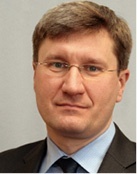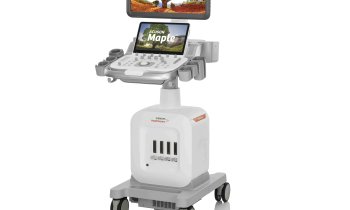Another fine MES for healthcare equipment finance
Managed Equipment Service (MES) contracts have the potential to transform equipment-supply financing for healthcare, according to Siemens Financial Services’ Ulrich Stark, Head of Debt Origination for Healthcare in EMEA, and Anthony Casciano, CEO of Project, Structured & Leveraged Finance Healthcare

In September 2012, technology provider Siemens Healthcare signed a contract with University Hospital Southampton NHS Foundation Trust. The deal involved the supply of over 130 pieces of equipment over a 13-year period. Constituted as a Managed Equipment Service (MES) contract, the deal is one of 12 such arrangements between the company and various UK NHS Trusts – with several more still under negotiation.
Indeed, the MES model for hospital equipment supply is proving to be a potential boon for cash-strapped NHS Trust procurement departments. Under MES contracts, major equipment suppliers, such as Siemens, undertake to own and manage the entire equipment requirement on operational facilities or major green field or expansion projects (perhaps a new hospital or hospital extension) for the life of an agreed concession. This includes procurement, delivery, installation and commissioning, user training, asset management and maintenance. It also includes the on-going replacement of equipment, to ensure that it remains state-of-the-art, and disposal. Additionally, it includes the cost risk associated with ownership and planned replacement.
Importantly, the contract is regardless of the manufacturer – meaning that Siemens Healthcare’s role is to procure the equipment on behalf of its client, no matter what its provenance. Of the equipment supplied under the agreements, substantial elements are being sourced rather than manufactured by Siemens, which – of course – still employs their considerable knowledge of the healthcare equipment universe.
Feedback from NHS Trusts states that the benefits of the MES arrangement include:
• The certainty that the hospital will source the equipment it needs at a fixed cost for the contract duration.
• A performance guarantee - knowing that the equipment supplied will perform as required, or be replaced at the provider’s expense.
• The ability to pay less if the performance of a piece of equipment does not meet the agreed standard.
• Having a single technical partner motivated throughout the contract to ensure the equipment supplied is operating optimally.
• Automatic access to equipment-upgrade cycles or future innovations.
For these reasons, we are seeing activity for MES contracts in a variety of jurisdictions. Although such contracts have the potential to transform healthcare equipment supply, each jurisdiction will need to adapt them to suit their own healthcare structures. As well as the UK – where the concept is most developed – MES contracts are also an established equipment procurement route in Spain, with the Netherlands currently implementing the required enabling legislation. Germany, too, has a parallel structure to the MES contract – the industriepartnerschaften – although, as it is lease-based, the emphasis on the service aspects of MES contracts are somewhat downgraded.
Additionally, in a November 2012 survey commissioned by Siemens, when asked to compare five value propositions for equipment provision, 200 healthcare executives in the USA found MES the most attractive of the potential models: with around 50% of respondents rating it six or seven in a seven-point scale of attractiveness.
Financing is important
The financial nature of several of the other models listed in the survey (e.g. trusted partnership, linked sales, corporate structured financing and revenue risk models) is revealing – not least because MES contracts dispense with the need for major upfront financing for equipment supply: paying, instead, on a periodic or per-use basis. However, this leaves the equipment supplier having to procure and install the equipment prior to receiving any payment, which may be beyond the capacity of most equipment suppliers – at least without help from a financier. For Siemens, this help comes via its in-house financier: Siemens Financial Services (SFS).
In fact, SFS finances the contract for Siemens Healthcare – structuring the deal via a ‘sale of receivables’ between the supplier (Siemens Healthcare) and financier (in this case SFS). Such an arrangement alleviates any cash and risk management needs the equipment supplier may have over the duration of the project – allowing them to bring their technical expertise to the fore while maintaining cash flow efficiencies.
In this respect, the role of the in-house financier is important. The equipment supplier can develop a close partnership with the project sponsor while not having to worry about counterparty risk. Meanwhile, Siemens Healthcare has the benefit of improved internal cash flow.
Of course, such a role is a strong use of an in-house financier, although they are becoming increasingly involved across a range of financial situations in healthcare project finance. Partly, this has been driven by the post-crisis hiatus in bank lending for all but the largest corporates. Since 2007, bank constraints for supporting equipment-supply projects have been particularly acute in Europe, although 2013 has seen a strong return of bank lending appetite for project or asset-based financing.
However, institutional investors have yet to develop the strong risk evaluation skills of the banks, which means they rely on trusted intermediaries to source and evaluate deals, as well as act as co-investors. This can be via partnerships with financiers and captives.
Spurred by the changes taking place in today’s funding market, captives are expanding their role in financing within the healthcare sector. Of course, in-house financiers such as SFS were set up for such a role – both to support sales of technology and to help finance the value chain (including both suppliers and purchasers) using innovative financing techniques. Yet the recent constraints within the banking market have brought these roles to the fore, with the potentially structural changes meaning they are unlikely to retreat, despite the evidence of returning liquidity.
Certainly, in-house financiers such as SFS will continue to develop solutions – such as MES contracts – that support the needs of the healthcare market, while highlighting their advisory role in support of client business strategies.
Indeed, banks, project sponsors, specialist funds and institutional investors are all encouraged by the fact the in-house financier of a major supplier is prepared to risk its own balance sheet to support its technology, which – because of their ability to evaluate their own kit – is a role most are happy to play.
Profile:
Ulrich Stark joined Siemens Bank in March 2012 as Head of Debt Origination Healthcare - EMEA (Europe, Middle East and Africa). His team is responsible for loan origination for healthcare transactions across the region, including project finance (including PFI/PPP), corporate loans and large-scale structured equipment financing. Before joining Siemens Bank, he worked for more than 10 years at HSH Nordbank, from 2004 as head of Infrastructure EMEA. Key projects include mandates as financial adviser and lead arranger for the first PPP financing in Belgium (Northern Diabolo Schieneninfrastuktur PPP, 2007) and Norway (E39 Klett-Bardshaug Road PPP, 2003). He was also responsible for structured asset finance transactions for logistics clients.
Anthony Casciano BA (econ) MBA, graduated from Drew University and gained his marketing MBA from Rutgers University’s School of Business. Prior to joining Siemens in 2008, he was managing director and head of DB Mid-Market Capital at Deutsche Bank. As senior vice president and general manager at Siemens Financial Service (SFS) in North America, he specialised in leveraged lending to middle market and larger corporate clients. Today, Anthony Casciano is chief executive officer of the Project & Structured Finance – Healthcare and Leveraged Finance businesses for SFS, where he oversees the growth of SFS activities in the global healthcare market.
26.08.2013











